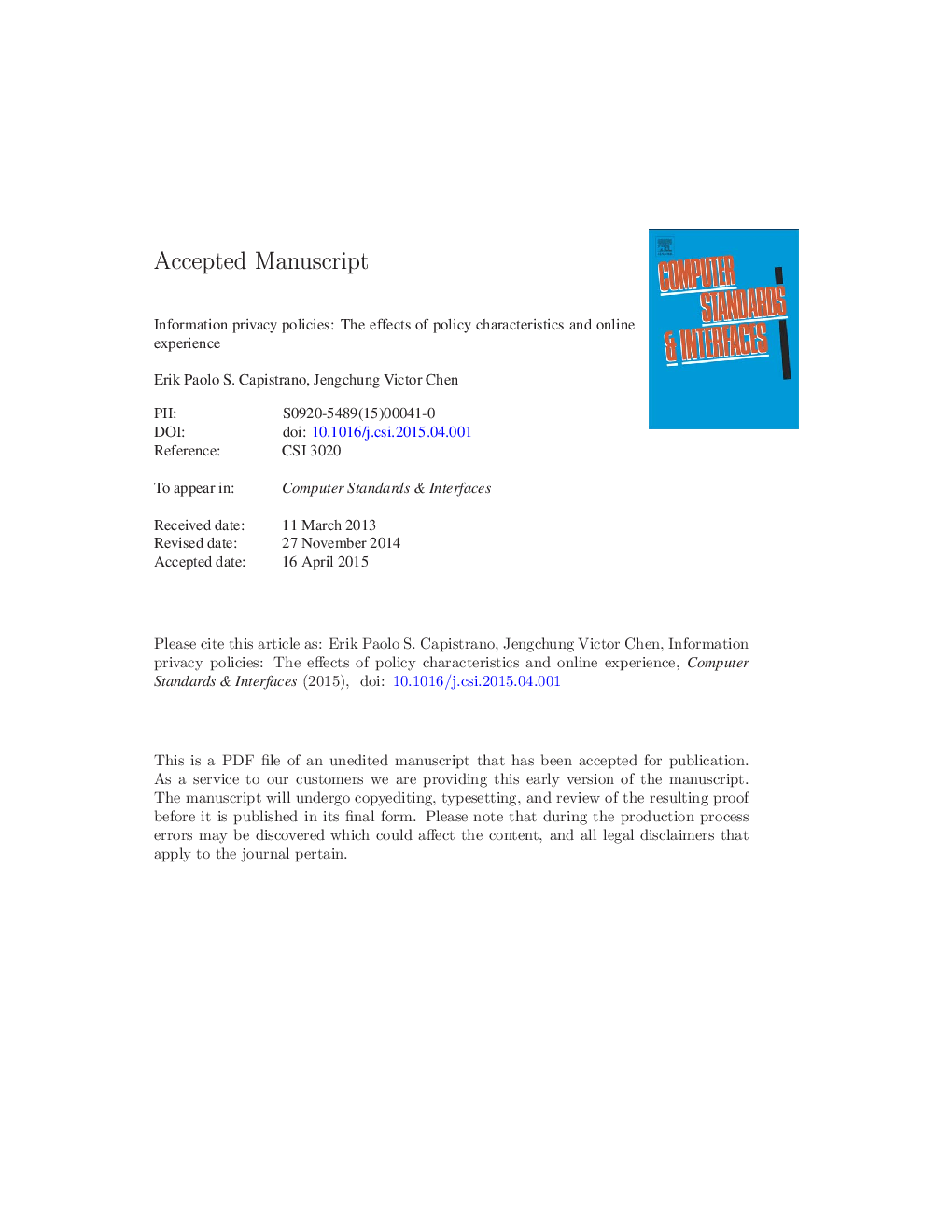| Article ID | Journal | Published Year | Pages | File Type |
|---|---|---|---|---|
| 6883205 | Computer Standards & Interfaces | 2015 | 24 Pages |
Abstract
Careful design of information privacy policies is one significant means to induce providing personal information. This research takes three design elements - length, visibility, and specificity - and tests their effectiveness to address information sensitivity, measuring perceived importance and relevance of the policy to decisions to share personal information. The experiment results show that visibility and specificity takes priority. Furthermore, high information sensitivity conditions induce higher perceptions of importance and relevance. Research implications suggest that managers should consider maximizing the benefits of these policy characteristics to induce consumers to read the policy and make it a significant consideration in sharing personal information.
Keywords
Related Topics
Physical Sciences and Engineering
Computer Science
Computer Networks and Communications
Authors
Erik Paolo S. Capistrano, Jengchung Victor Chen,
